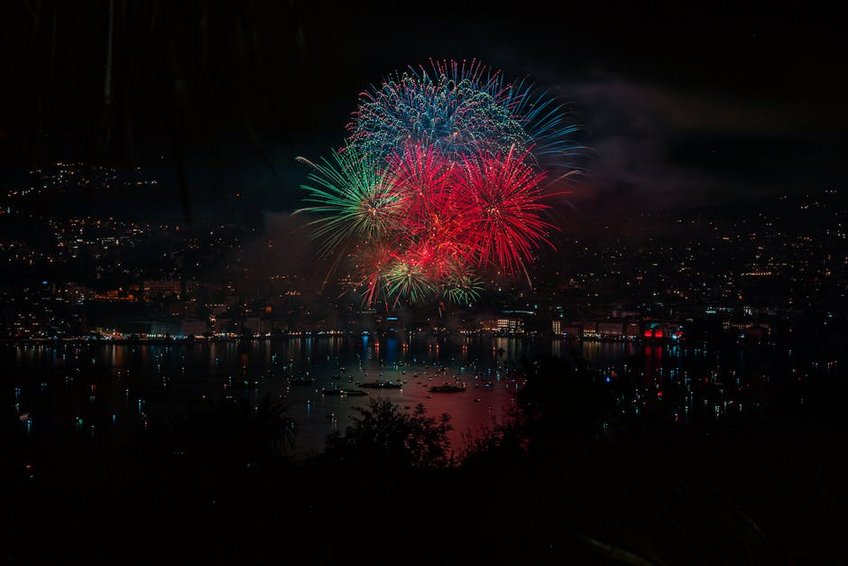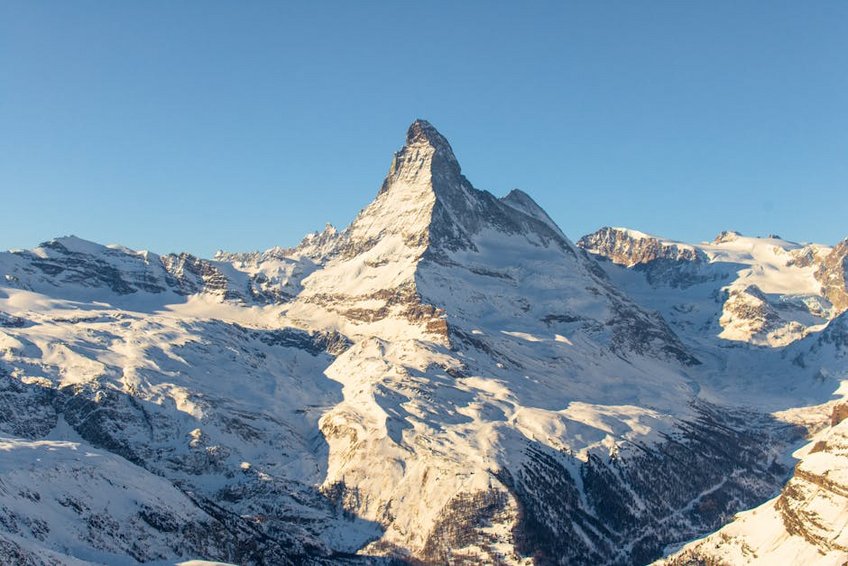Switzerland Zermatt Ski Experience – Alpine Adventure Awaits
Your Switzerland Zermatt ski experience combines world-class slopes with breathtaking Matterhorn views across 360 kilometers of diverse terrain suitable for all skill levels. This legendary Swiss resort delivers reliable snow conditions from November through April, complemented by charming car-free villages and sophisticated alpine infrastructure. Our guide covers essential planning tips, budget strategies, and insider secrets to maximize your winter sports adventure in this iconic destination.
Essential Information – Zermatt Alpine Resort
Zermatt sits at 1,620 meters altitude in southern Switzerland’s Valais canton, accessible via scenic train rides from major cities like Zurich and Geneva. This car-free village preserves its historic charm with traditional chalets while offering modern amenities and eco-friendly policies that protect the pristine alpine environment. The resort’s unique location provides year-round skiing opportunities on the Theodul Glacier, ensuring snow sports even during summer months.
What You Need to Know
Understanding Zermatt’s geography and infrastructure helps optimize your visit to this expansive ski domain.
- Zermatt connects directly to Cervinia, Italy via the Matterhorn ski paradise, requiring valid passport for international skiing across two countries during single day.
- The resort operates 53 lifts including modern gondolas and cable cars that transport up to 90,000 skiers hourly across different altitude zones from 1,620m to 3,899m.
- Advanced snowmaking systems cover 80% of crucial lower slopes, guaranteeing quality conditions from early December through late April season.
- Budget option: $150-200 daily covers dormitory-style lodging, self-prepared meals, and basic lift passes purchased in advance online; prioritize skiing over luxury amenities and use public facilities.
- Mid-range option: $250-400 daily includes three-star hotels with breakfast, equipment rentals from quality shops, mountain restaurant lunches, and flexibility for additional activities like spa visits.
- Luxury option: $600+ daily provides five-star accommodation with Matterhorn views, private ski instruction, fine dining reservations, and helicopter transfers for ultimate convenience and exclusivity.
- Zermatt Tourism Official Website
- Switzerland Tourism Authority
Key Details
Zermatt’s development carefully balances tourism growth with environmental preservation through strict building codes and emission controls. Local authorities maintain the village’s traditional architecture while integrating sustainable technologies like hydroelectric power from mountain streams. The community’s commitment to conservation ensures future generations enjoy the same spectacular alpine landscapes that have attracted visitors since the mid-19th century.
Ski Terrain and Difficulty Levels
Zermatt’s ski area divides into four main sectors with balanced distribution across difficulty levels to accommodate various abilities. Sunnegga and Gornergrat regions offer predominantly intermediate cruising runs with stunning glacier views, while Schwarzsee provides challenging black diamond descents for experts. Beginners find dedicated learning areas at Blauherd with gentle slopes and professional ski schools offering instruction in multiple languages.

Planning Your Switzerland Zermatt Ski Experience
Organizing your Switzerland Zermatt ski experience requires considering seasonal patterns, accommodation locations, and advance reservations for popular services. December through March delivers peak snow conditions with vibrant atmosphere, though January offers thinner crowds between holiday periods. Booking ski passes online 30 days beforehand saves 15-20% compared to walk-up rates while securing preferred time slots for mountain restaurants.
Mid-range visitors should budget $250-400 daily covering lift tickets, equipment rental, and comfortable lodging with breakfast included. Luxury travelers might spend $600+ nightly for five-star hotels with spa facilities and private guides, while budget-conscious skiers can manage $150-200 using self-catering apartments and supermarket meals.
Best Time to Visit Zermatt
December to February provides optimal powder conditions with average temperatures ranging from 23°F to 32°F (-5°C to 0°C) and substantial snowfall accumulation exceeding 4 meters annually. These months deliver reliable skiing across all sectors though Christmas and New Year periods command premium pricing and require reservations six months advance. March and April offer longer daylight hours with milder temperatures perfect for leisurely mountain lunches.
Shoulder seasons in November and May present cost-saving opportunities with fewer visitors, though limited lift operations focus mainly on glacier areas above 3,000 meters. Summer skiing operates June through September on the Theodul Glacier, attracting training teams and dedicated enthusiasts despite reduced terrain availability.
Budget Planning and Costs
Strategic budgeting ensures your alpine adventure matches financial expectations without compromising essential experiences.
Essential Preparation Checklist
Proper preparation significantly enhances comfort and safety throughout your alpine winter holiday in variable mountain conditions. Pack technical layers including moisture-wicking base layers, insulated mid-layers, and waterproof outer shells rated for sub-zero temperatures, plus high-quality goggles and sunscreen for intense UV protection at altitude.
Secure comprehensive travel insurance covering winter sports, emergency evacuation, and equipment protection before departure. European visitors need valid EHIC/GHIC cards while US passport holders require Schengen visa compliance for stays under 90 days; confirm passport validity extends six months beyond travel dates.
Top Attractions and Activities
Beyond exceptional skiing, Zermatt delivers diverse winter experiences from cultural excursions to adrenaline-fueled adventures across spectacular landscapes. The Gornergrat Railway journey presents unparalleled Matterhorn photography opportunities while ascending to 3,089 meters observation platforms with panoramic views across 29 peaks. Evening fondue dinners in rustic mountain huts provide authentic Swiss culinary traditions after active days on slopes.
Adventure seekers can book guided ice climbing sessions in nearby Gorner Gorge or moonlight snowshoe tours through silent forests illuminated by starry skies. Families enjoy gentle toboggan runs, indoor swimming pools, and interactive museum exhibits detailing local mountaineering history and alpine ecology.
Must-See Highlights
Zermatt’s iconic landmarks and viewpoints deserve prioritized scheduling within any itinerary for maximum photographic and experiential impact. Matterhorn Glacier Paradise at 3,883 meters delivers Europe’s highest cable car station with panoramic viewing platforms, glacial palace ice sculptures, and year-round skiing on permanent snowfields. The Sunnegga Funicular provides swift access to beginner-friendly areas with stunning reflections in Leisee lake during clear weather conditions.
Historic mountaineering centers like Hornlihütte offer insight into early Matterhorn ascents while serving as base camps for contemporary climbers attempting legendary routes. Klein Matterhorn cable car transports visitors to Europe’s highest sightseeing platform with 360-degree Alpine vistas spanning Switzerland, Italy, and France on cloudless days.
Hidden Gems and Local Favorites
Discover Zermatt’s lesser-known treasures that escape mainstream tourist attention while delivering authentic regional character and intimate atmospheres. Findberger Lake remains surprisingly uncrowded despite offering perfect Matterhorn reflections during morning hours before ski lifts begin operation. Local guides lead off-piste tours to secret powder stashes in Triftji area, accessible via short hikes from standard marked trails.
Traditional valaisanne restaurants in old village quarters serve hearty raclette and air-dried meats without reservation requirements common at mountain establishments. The Hinterdorf historical district preserves original 16th-century wooden buildings with fascinating architectural details often overlooked by visitors heading directly to slopes.
Winter Activities Beyond Skiing
Non-skiers and rest days provide opportunities to experience Zermatt’s winter magic through alternative recreational pursuits and cultural immersion. Guided snowshoe excursions traverse tranquil landscapes with knowledgeable interpreters explaining local flora, fauna, and geological formations. Paragliding tandem flights launch from Rothorn summit, offering bird’s-eye perspectives of the entire ski domain during 20-minute aerial adventures.
The Matterhorn Museum chronicles tragic first ascent attempts and village development through multimedia exhibits and historical artifacts. Wellness centers feature heated outdoor pools with mountain views, perfect for relaxing sore muscles after active days in crisp alpine air.
Practical Travel Information
Navigating Zermatt’s transportation network requires understanding unique access logistics within this car-free environment served primarily by electric vehicles and efficient rail connections. Most visitors arrive via Switzerland’s excellent train system, with direct connections from Zurich Airport (3.5 hours) and Geneva Airport (4 hours) to Zermatt’s central station. Upon arrival, electric taxis and hotel shuttles transport luggage while pedestrians explore the compact village center easily on foot.
Accommodation spans budget hostels to luxury palaces, with premium properties clustered near the main station for ski lift access while quieter options reside in outlying hamlets. Advance reservations prove essential during peak seasons, particularly for properties with included half-board meal plans and convenient equipment storage facilities.
| Accommodation Category | Options and Features | Price Range (USD/Night) |
|---|---|---|
| Budget Hostels | Shared dormitories, communal kitchens, basic amenities, social atmosphere | $80-120 |
| Mid-Range Hotels | Private rooms with en-suite bathrooms, breakfast included, ski storage | $200-350 |
| Luxury Hotels | Five-star service, spa facilities, fine dining, Matterhorn views, concierge | $500-900 |
| Self-Catering Apartments | Kitchen facilities, multiple bedrooms, laundry access, family-friendly | $150-300 |


